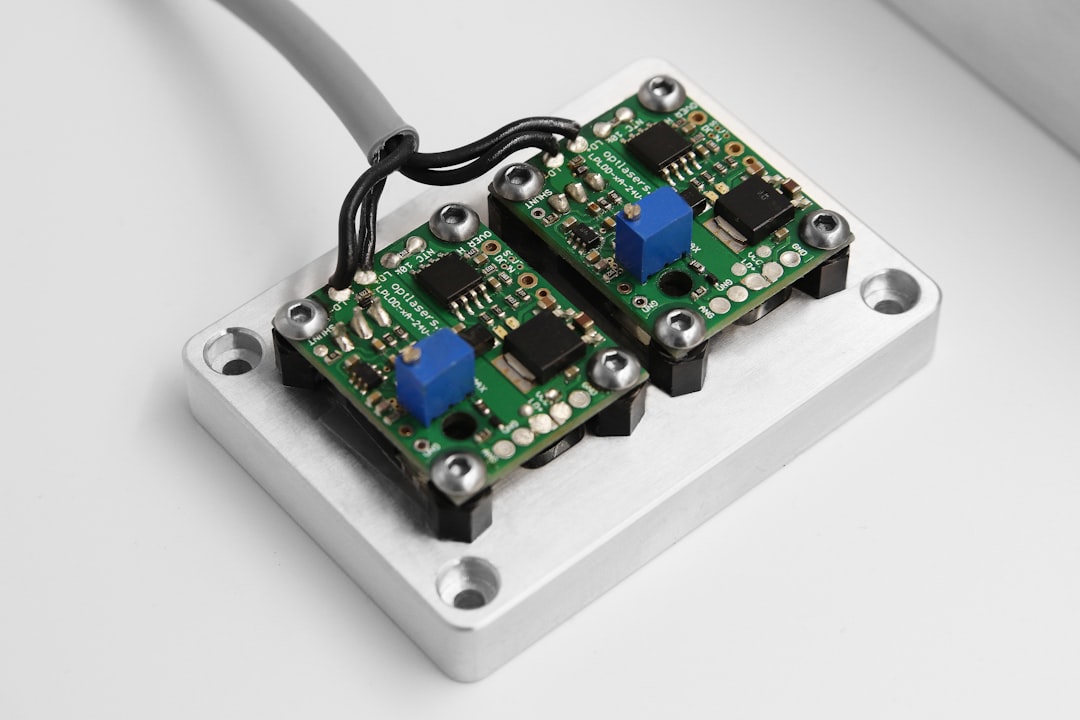Laser hair removal is a popular cosmetic procedure that uses concentrated beams of light to remove unwanted hair. The process involves targeting the hair follicles with the laser, which damages them and inhibits future hair growth. The procedure is effective for both small and large areas of the body, including the face, legs, arms, underarms, and bikini line. It is important to note that laser hair removal is not a one-time treatment; multiple sessions are typically required to achieve the best results.
During the procedure, the technician will use a handheld device to deliver the laser pulses to the targeted areas. The laser energy is absorbed by the pigment in the hair follicles, which causes damage to the follicle and inhibits future hair growth. It is important to choose a reputable and experienced provider for laser hair removal to ensure safety and effectiveness. Additionally, it is essential to have a consultation with the provider before undergoing the procedure to discuss your medical history, expectations, and any potential risks or side effects.
Key Takeaways
- Laser hair removal targets hair follicles with concentrated light to inhibit future hair growth
- Shave the treatment area before your appointment and avoid sun exposure and waxing
- During the procedure, you may feel a slight stinging sensation as the laser targets the hair follicles
- Aftercare includes avoiding sun exposure and using gentle skincare products
- Potential risks include skin irritation, redness, and changes in skin pigmentation
Preparing for Your Laser Hair Removal Appointment
Before your laser hair removal appointment, there are several steps you can take to prepare for the procedure. First, it is important to avoid sun exposure and tanning beds for at least six weeks before your appointment, as this can increase the risk of complications and reduce the effectiveness of the treatment. Additionally, you should avoid plucking, waxing, or electrolysis for at least six weeks before the procedure, as these methods can disturb the hair follicle and interfere with the laser treatment.
It is also important to shave the area to be treated a day or two before your appointment. This helps the laser energy to target the hair follicles more effectively without any interference from the surface hair. On the day of your appointment, it is best to wear loose-fitting clothing to ensure comfort during the procedure. It is also important to follow any specific instructions provided by your laser hair removal provider, such as avoiding certain skincare products or medications before the treatment.
What to Expect During the Procedure
When you arrive for your laser hair removal appointment, you will be taken to a treatment room where the technician will explain the procedure and answer any questions you may have. You will be given protective eyewear to wear during the treatment to shield your eyes from the laser light. The technician will then use a handheld device to deliver the laser pulses to the targeted areas of your skin.
During the procedure, you may feel a slight stinging or snapping sensation as the laser pulses are delivered. Some people describe it as feeling like a rubber band snapping against their skin. The sensation is generally well-tolerated, but if you are concerned about discomfort, you can discuss options for numbing cream or other pain management techniques with your provider.
The length of the procedure will depend on the size of the area being treated, but most sessions can be completed in under an hour. After the treatment is complete, you may experience some redness and swelling in the treated area, but this typically subsides within a few hours. It is important to follow any aftercare instructions provided by your provider to ensure optimal results and minimize any potential side effects.
Aftercare and Recovery Tips
| Recovery Tips | Benefits |
|---|---|
| Stay hydrated | Helps in flushing out toxins and aids in recovery |
| Get enough sleep | Promotes healing and boosts immune system |
| Follow medication schedule | Ensures proper healing and prevents complications |
| Attend aftercare programs | Provides support and guidance for long-term recovery |
After your laser hair removal treatment, it is important to take care of your skin to promote healing and minimize any potential side effects. You may experience some redness and swelling in the treated area, which is normal and should subside within a few hours. To help soothe any discomfort, you can apply a cold compress or aloe vera gel to the area.
It is important to avoid sun exposure and tanning beds for at least a week after your treatment, as your skin may be more sensitive to UV rays during this time. You should also avoid hot showers, saunas, and strenuous exercise for at least 24 hours after your treatment to allow your skin to heal properly. Additionally, it is important to keep the treated area clean and moisturized to promote healing and prevent any potential complications.
It is normal to experience some shedding of the treated hair in the days following your treatment. This is a sign that the laser has effectively damaged the hair follicles, and it is an indication that the treatment is working. It is important to continue with your scheduled treatments as recommended by your provider to achieve the best results.
Potential Risks and Side Effects
While laser hair removal is generally considered safe and effective, there are some potential risks and side effects to be aware of. The most common side effects include redness, swelling, and mild discomfort in the treated area, which typically subside within a few hours. In some cases, people may experience temporary changes in skin color, such as lightening or darkening of the skin, but these usually resolve on their own over time.
More serious side effects are rare but can include blistering, scarring, or infection. To minimize these risks, it is important to choose a reputable and experienced provider for your laser hair removal treatments. It is also essential to follow all aftercare instructions provided by your provider and to avoid sun exposure and tanning beds after your treatment.
It is important to discuss any concerns or questions you may have with your provider before undergoing laser hair removal to ensure that you are well-informed about the potential risks and side effects. By taking these precautions and following all aftercare instructions, you can minimize any potential complications and achieve optimal results from your laser hair removal treatments.
How to Maintain Your Results

After completing your series of laser hair removal treatments, it is important to take steps to maintain your results. While laser hair removal can significantly reduce unwanted hair growth, it is not permanent and may require occasional maintenance treatments to keep the hair at bay. The frequency of maintenance treatments will vary depending on individual factors such as hair type, skin color, and hormonal changes.
To maintain your results, it is important to continue following any aftercare instructions provided by your provider, such as avoiding sun exposure and tanning beds and keeping the treated area clean and moisturized. It is also essential to continue with any recommended skincare routines or products that can help minimize hair regrowth.
In addition to following aftercare instructions, you may also consider other hair removal methods such as shaving or depilatory creams between maintenance treatments. These methods can help keep any regrowth in check while you wait for your next laser hair removal session.
Frequently Asked Questions about Laser Hair Removal
1. Is laser hair removal painful?
While some people may experience mild discomfort during laser hair removal, it is generally well-tolerated and most people find it manageable. If you are concerned about discomfort, you can discuss options for numbing cream or other pain management techniques with your provider.
2. How many sessions are needed for optimal results?
The number of sessions needed for optimal results will vary depending on individual factors such as hair type, skin color, and the area being treated. Most people require multiple sessions spaced several weeks apart to achieve the best results.
3. Are there any areas of the body where laser hair removal is not recommended?
Laser hair removal can be performed on most areas of the body, but it may not be suitable for certain areas such as around the eyes or on tattoos or moles. It is important to discuss any concerns you may have with your provider before undergoing treatment.
4. Can laser hair removal be performed on all skin types?
Advancements in technology have made it possible for laser hair removal to be performed on a wide range of skin types. However, it is important to choose a provider with experience in treating diverse skin tones to ensure safety and effectiveness.
5. How long do the results of laser hair removal last?
While laser hair removal can significantly reduce unwanted hair growth, it is not permanent and may require occasional maintenance treatments to keep the hair at bay. The frequency of maintenance treatments will vary depending on individual factors such as hair type, skin color, and hormonal changes.
In conclusion, laser hair removal is a popular cosmetic procedure that offers long-term reduction of unwanted hair growth. By understanding the process of laser hair removal, preparing for your appointment, knowing what to expect during the procedure, following aftercare tips, being aware of potential risks and side effects, maintaining results, and being informed about frequently asked questions about laser hair removal, you can make an informed decision about whether this treatment is right for you. It is important to choose a reputable provider with experience in treating diverse skin tones and to follow all aftercare instructions provided by your provider to ensure safety and effectiveness. With proper care and maintenance, laser hair removal can provide long-lasting results and smooth, hair-free skin.
If you’re considering laser hair removal, it’s essential to be well-informed about the process and its potential outcomes. In a recent article on InLaserHairRemoval.com, they discuss the effectiveness of laser hair removal and whether hair grows back after treatment. This insightful piece provides valuable information for anyone considering this popular hair removal method. To learn more about the process and what to expect, check out the article here.
FAQs
What is laser hair removal?
Laser hair removal is a cosmetic procedure that uses a concentrated beam of light (laser) to remove unwanted hair. The laser targets the pigment in the hair follicles, damaging them and inhibiting future hair growth.
How should I prepare for laser hair removal?
Before your laser hair removal treatment, it is important to avoid sun exposure and tanning beds for at least six weeks. You should also avoid plucking, waxing, or electrolysis for six weeks prior to the treatment, as the laser targets the hair roots, which are temporarily removed by these methods.
Is there anything I should avoid before laser hair removal?
Before laser hair removal, it is important to avoid using any products that may irritate the skin, such as perfumes, deodorants, or lotions. It is also recommended to shave the treatment area the day before your appointment to ensure the laser can effectively target the hair follicles.
What can I expect during the laser hair removal process?
During the laser hair removal process, a handheld device will be used to deliver the laser pulses to the treatment area. You may experience a slight stinging or snapping sensation, but most people tolerate the treatment well. The duration of the treatment will depend on the size of the area being treated.
How many sessions will I need for laser hair removal?
The number of sessions needed for laser hair removal varies depending on the individual and the treatment area. Most people require multiple sessions, typically spaced 4-6 weeks apart, to achieve the best results. This is because hair grows in different cycles, and multiple sessions ensure that all hair follicles are targeted.
What should I do after laser hair removal?
After laser hair removal, it is important to avoid sun exposure and to use sunscreen on the treated area. You may experience some redness or swelling, which can be relieved with ice packs or aloe vera gel. It is also important to avoid picking or scratching the treated area to prevent irritation or infection.






